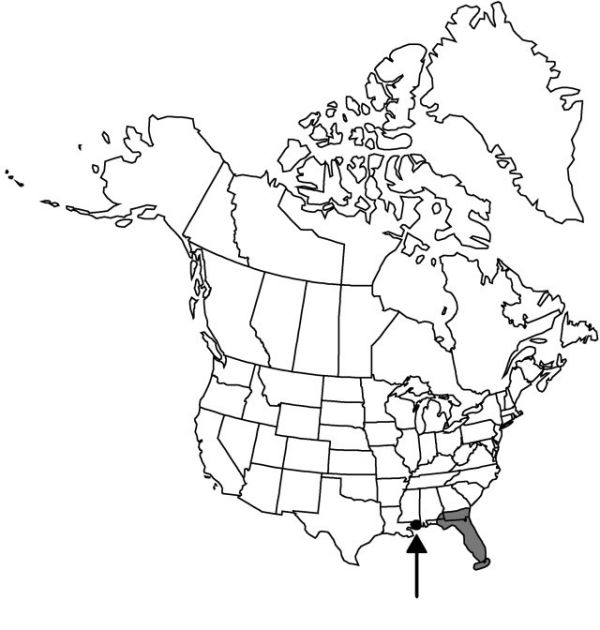Sisyrinchium miamiense
Bull. Torrey Bot. Club 26: 226. 1899.
Herbs, perennial, brownish or bronze-olive when dry, to 4 dm, not glaucous; rhizomes slightly elongated. Stems branched, with 1 or 2 nodes, 1.3–2 (–2.5) mm wide, glabrous, margins usually entire, similar in color and texture to stem body; first internode 9–30 cm, equaling or shorter than leaves; distalmost node with 1–3 branches. Leaf-blades glabrous, bases not persistent in fibrous tufts. Inflorescences borne singly; spathes green to occasionally purplish, obviously wider than supporting branch, glabrous, keels usually entire; outer 12.5–23 mm, 2.3 mm shorter to 3.7 mm longer than inner, tapering evenly towards apex, margins basally connate 3.9–6.5 mm; inner with keel straight to evenly curved, hyaline margins 0.1–0.3 mm wide, apex acute or obtuse, ending at or to 1 mm proximal to aristate green apex. Flowers: tepals pale blue to deep bluish violet, bases yellow; outer tepals 8.3–12.8 mm, apex rounded to emarginate or truncate, aristate; filaments connate ± entirely, stipitate-glandular basally or glabrous; ovary similar in color to foliage. Capsules dark-brown or nearly black, ± globose to obovoid, 3.7–4.5 mm; pedicel ascending to spreading. Seeds globose to obconic, lacking obvious depression, 1–1.2 mm, rugulose. 2n = 32.
Phenology: Flowering late winter–summer.
Habitat: Roadside ditches, hammocks, open woods
Elevation: 0–50 m
Distribution

Ala., Fla., Ga., Miss.
Discussion
Selected References
None.
Lower Taxa
"elongated" is not a number."obviously wider" is not a number.